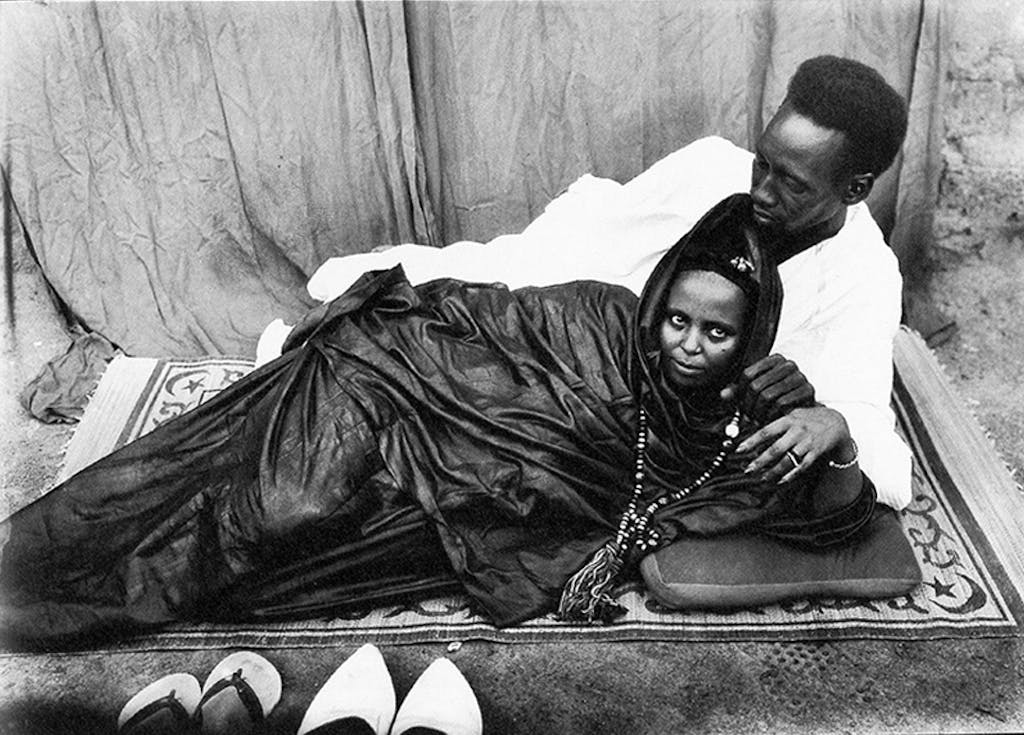Between 1948 and 1962 Keïta photographed hundreds of sitters – women, men, families, children, couples – depicting them in their best light to create perfect portraits in black and white. He took charge and decided every aspect of the composition – elegant poses, the gaze, the position of the hands – also adding props and lending accessories, such as glasses, a watch or a hat if needed, to create highly refined pictures. The backdrop – that changes on a regular basis and later helped Keïta to date the images – either contrasts with the sobriety of the outfits or echoes their rich patterns. Keïta’s camera records the changing Malian society in the years leading up to the independence of the country. His sitters – whether wearing traditional or European outfits – aspire to change, to a different society, and this modernity is encapsulated in their attitude. Keïta closed his studio in 1962, when he became the official photographer for the Malian government. He died in 2001 in Paris, having lived to see his work become internationally acclaimed in the 1990s.
Seydou Keïta’s work has been presented in solo exhibitions in many institutions, including the Fondation Cartier pour l’Art Contemporain, Paris (1994); the Musée d’Art et d’Histoire, Geneva (1994); the Ikon Gallery, Birmingham (1995); the National Museum of African Art, Smithsonian Institution, Washington, DC (1995); the Minneapolis Institute of Art, Minneapolis (1995); the Pinacoteca do Estado de São Paulo (1997); SFMOMA, the San Francisco Museum of Modern Art (1997); the Museum of Contemporary Art, Miami (2000); MAMM, the Multimedia Art Museum, Moscow (2014); and the Galeries Nationales du Grand Palais, Paris (2016).
